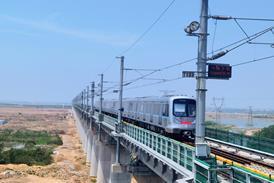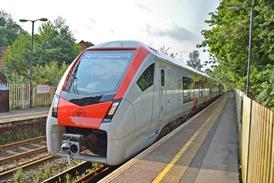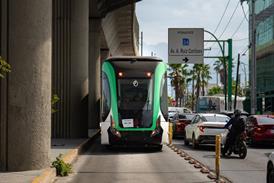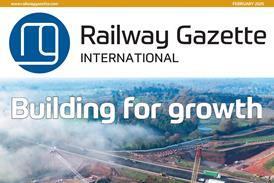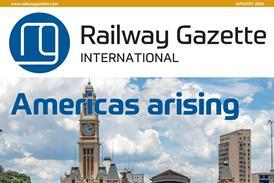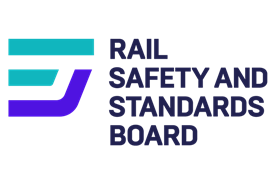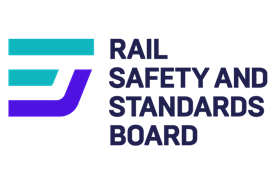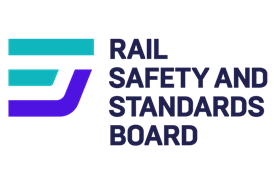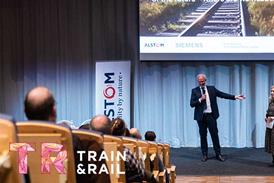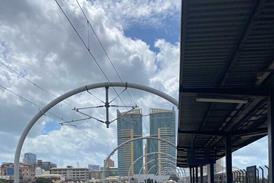SAN Francisco’s Bay Area Rapid Transit District is another North American operator that has embarked on an ambitious TBTC programme. It will have some significant differences from the New York City approach.
BART began its Advanced Automatic Train Control System (AATC) development early in 1994 under an unusual joint project with Hughes Aircraft and Morrison Knudsen Corp. Funded in part by $19·5m in Defence Conversion funds, the project was designed to use Enhanced Position Location Reporting System (EPLRS) military radio technology as the communications element of a train control system that could nearly double the capacity of BART’s busiest segments. With AATC, BART expects to move towards an ultimate goal of 2min headways in the Transbay Tubes, avoiding the need to add extra tunnels as traffic continues to grow.
BART plans to install AATC over the heavily-used 40 km segment from Bay Fair to Daly City. This encompasses trackage between Bay Fair and the Oakland Wye shared by Dublin/Pleasanton and Fremont line trains, and from the Oakland Wye through the Transbay Tubes to Daly City used by all BART routes between the East Bay and San Francisco.
While the AATC technology is generally similar to that being developed for New York, the BART installation varies in two important respects. It is the only installation thus far to apply EPLRS military radio technology, which affords an ability to communicate in an electrically noisy or high radio traffic environment, and an ability to determine how far apart each radio is from the others. With two wayside radios communicating with a radio on a train, train position can be determined closer than 5metres while the train is transmitting its status and receiving speed commands or other information.
While NYCT’s equipment is likely to be predominantly vehicle-intelligent, the BART installation will be wayside-intelligent, with most intelligent functions performed by a station computer in each control zone. There are several reasons for this, explains BART’s AATC project manager Eugene Nishinaga.
’We wanted to get the maximum benefit from the hardware by putting it in a wayside, rather than an on-board location’, he says. ’Decisions about how we want to operate a fleet of cars can be better made from a wayside location, where more information can be available, and both vital and non-vital decisions can be made to achieve co-ordination of multiple trains. A vehicle intelligent system doesn’t have that much information.’
BART is not as concerned as NYCT is about the communication network going down, he adds. ’The radio system we are using is extremely robust and reliable’, says Nishinaga. ’This has been demonstrated by both military experience and in several months of testing by both BART and Harmon. It has proven very robust in collecting data and delivering data packages.’
The system being designed and built by Harmon will be made up of a series of control zones, each with a station computer (SC) and an AATC station interface controller (ASIC). Station and wayside radio sets (SRS and WRS, respectively) will provide the communications link between the station computer and the vehicle equipment, which will consist of a vehicle radio set (VRS), an AATC train interface controller (ATIC) and the vehicle automatic train control (ATC). Using interlocking status, the location of other trains in the area, and the received range measurements of train position, the station computer will calculate and transmit new stopping profiles for every train every half second.
Station computer functions will include radio network management; determination of train locations within the control zone; calculation of safe speed codes and, if necessary, reduced braking rates for each train within the zone; co-ordination of train hand-on with adjacent control zones; interface with the existing ATC equipment, including ATO and Central Control; interface with the ASICs to receive wayside signal data; and the performance of health and fault assessment, data logging, and provision of an operator interface.
AATC will be overlaid on BART’s existing ATC system, and will use the existing track circuits to assist in lateral track discrimination and to detect ’silent’ trains and broken rails. An AATC equipped train will be capable of operating with the existing ATC as well as the new system. It will operate under AATC control when receiving AATC commands, and will accept and operate under ATC commands otherwise.
In the first phase of the project, a test AATC installation was operated successfully on BART’s Hayward test track for several months in 1996. A planned pilot installation on main line tracks, however, was delayed for nearly two years while the AATC project alliance was restructured. Morrison Knudsen withdrew from the project, while Hughes (now Raytheon) ultimately licensed the EPLRS technology to Harmon Industries. BART established a new contract with Harmon early this year under which the firm, with Raytheon now a subcontractor, will complete both development and implementation phases of the AATC project for about $45m.
Development work is now in progress for a Phase II pilot installation on 5 km between BART’s Lake Merritt and Fruitvale stations, with installation and commissioning expected to be complete by summer 1999. BART now expects that safety certification and California Public Utilities Commission permission to operate with AATC can be completed by September 1999. Installation of the full AATC system will then follow, with an anticipated 2001 start-up in time to provide the additional capacity needed for the San Francisco Airport extension now under construction. o
CAPTION: AATC will initially be installed on the BART core section from Daly City (above) to Bay Fair
CAPTION: Fig 1. Overview of the BART Advanced Automatic Train Control system
CAPTION: Fig 2. Adjacent radio areas of an AATC installation overlap in a transition zone

